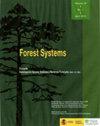Real options approach: Case study applied to a nursery to produce Eucalyptus forest seedlings in Brazil
IF 0.7
4区 农林科学
Q3 FORESTRY
引用次数: 1
Abstract
Aim of study: We checked if an infrastructure investment project for a nursery to produce Eucalyptus forest seedlings using the real options approach was economically viable, in order to verify the influence of the deferral, expansion and abandonment options on the investment project value, as well as their concatenation. Area of study: Our study was based on technical-economic coefficients of a nursery infrastructure to be installed in the São Paulo’s state Midwest region, Brazil. Material and methods: The investment was assessed by addressing the uncertainties inherent in the investment project. We used the dynamic model for real option approach and, to determine the volatility of the project, we applied the Monte Carlo simulation method. As real options for the project, we employed deferral, expansion, and abandonment. Main results: Using the traditional valuation methodology, we obtained a negative static net present value of USD 50,957. When incorporating the real options of the abandonment, deferral and expansion in the form of managerial flexibility to forest managers, we obtained the expanded net present value of USD 216,498, that is, 524.8% of valuation. The traditional method of investment evaluation undervalues the project in infrastructures to produce Eucalyptus forest seedlings nursery, and the increase in managerial flexibility, through the real options for deferral, expansion and abandonment, promotes value to forest managers and enables the feasibility of the project. Research highlights: Infrastructure investment project for a nursery to produce Eucalyptus forest seedlings is not economically viable through the traditional economic evaluation techniques. However, by incorporating managerial flexibilities, through real options, the investment project was valued and it became economically viable.实物期权方法:应用于巴西桉树苗圃的案例研究
研究目的:利用实物期权方法检验桉树林苗苗圃基础设施投资项目在经济上是否可行,以验证延期、扩建和放弃选项对投资项目价值的影响,以及它们之间的关联。研究领域:我们的研究是基于一个苗圃基础设施的技术经济系数,该设施将安装在巴西圣保罗州中西部地区。材料和方法:通过解决投资项目中固有的不确定性来评估投资。我们采用实物期权方法的动态模型,并采用蒙特卡罗模拟方法来确定项目的波动率。作为项目的实际选择,我们采用了延期、扩展和放弃。主要结果:使用传统的估值方法,我们获得了50,957美元的负静态净现值。在考虑以经营灵活性的形式给予森林经营者的放弃、延期和扩张的实物期权后,我们得到扩张后的净现值为216,498美元,即估值的524.8%。传统的投资评价方法低估了生产桉树森林苗圃的基础设施项目的价值,而通过延期、扩大和放弃的实际选择,增加了管理灵活性,提高了森林管理者的价值,使项目具有可行性。研究重点:通过传统的经济评价技术,桉树林苗苗圃基础设施投资项目在经济上不可行。但是,通过实物期权纳入管理灵活性后,投资项目得到了重视,在经济上变得可行。
本文章由计算机程序翻译,如有差异,请以英文原文为准。
求助全文
约1分钟内获得全文
求助全文
来源期刊

Forest Systems
FORESTRY-
CiteScore
1.40
自引率
14.30%
发文量
30
审稿时长
6-12 weeks
期刊介绍:
Forest Systems is an international peer-reviewed journal. The main aim of Forest Systems is to integrate multidisciplinary research with forest management in complex systems with different social and ecological background
 求助内容:
求助内容: 应助结果提醒方式:
应助结果提醒方式:


